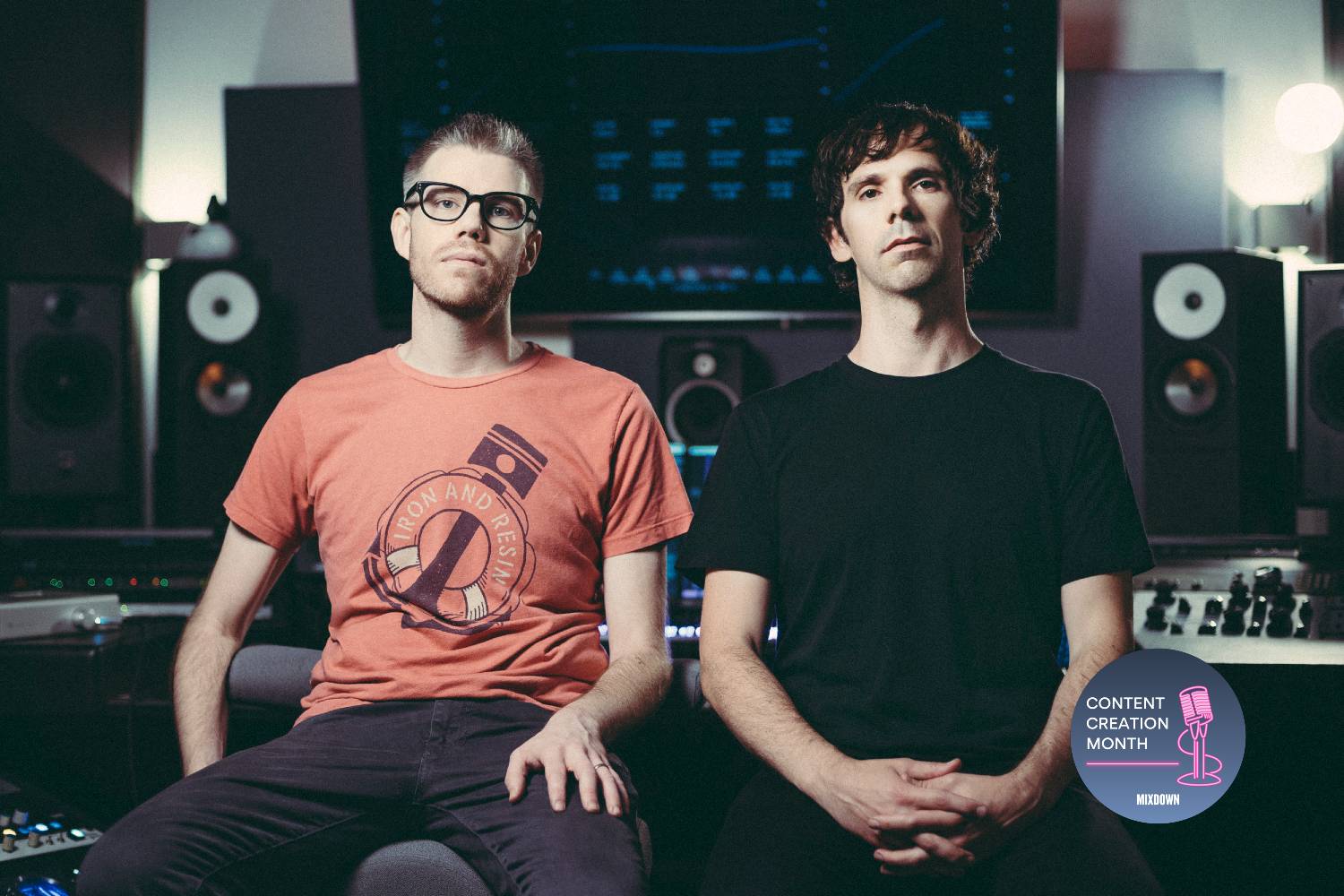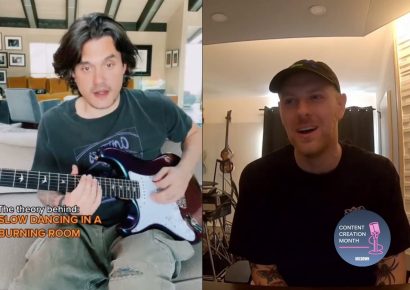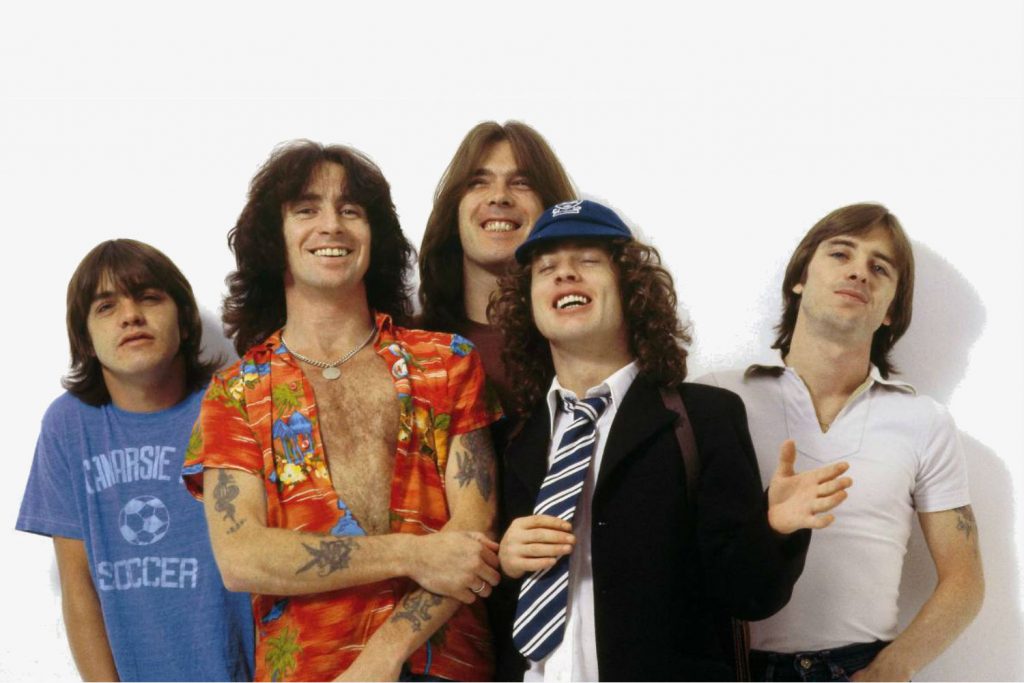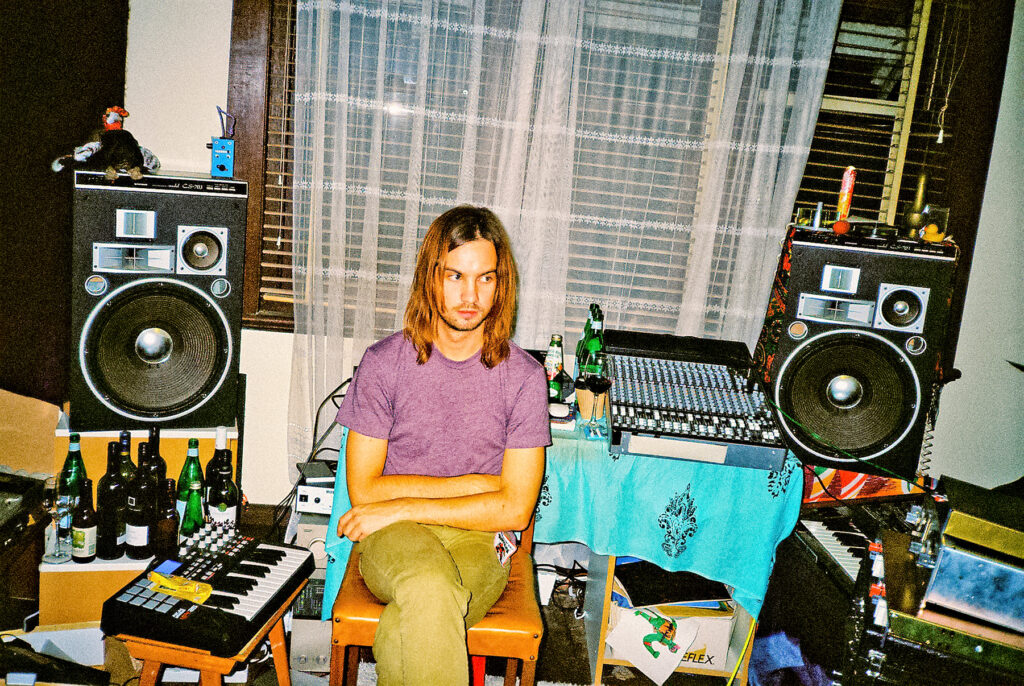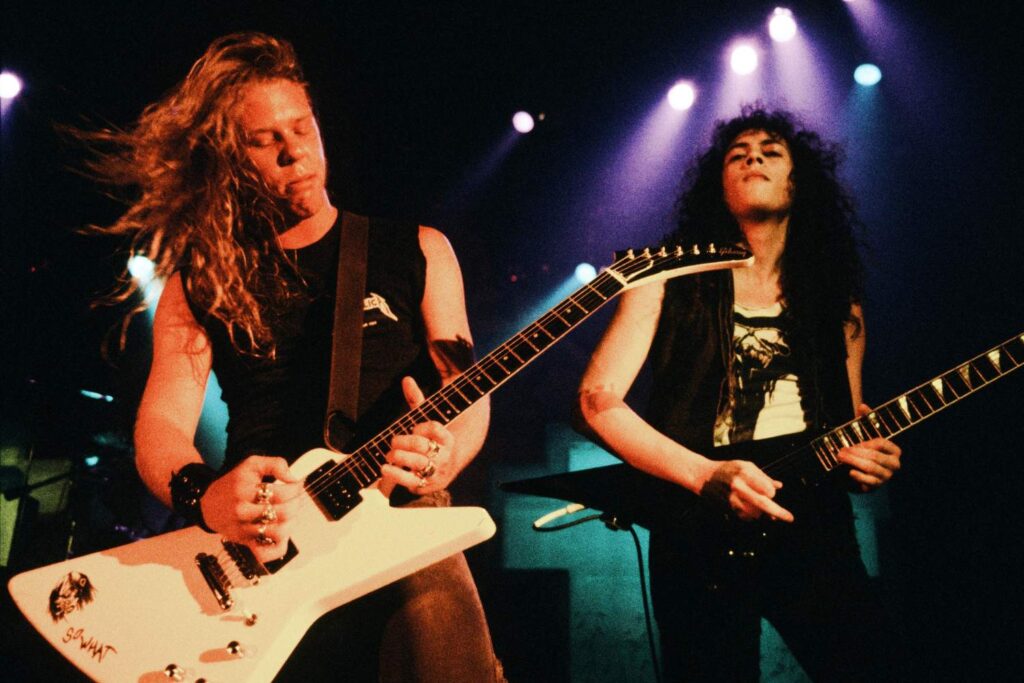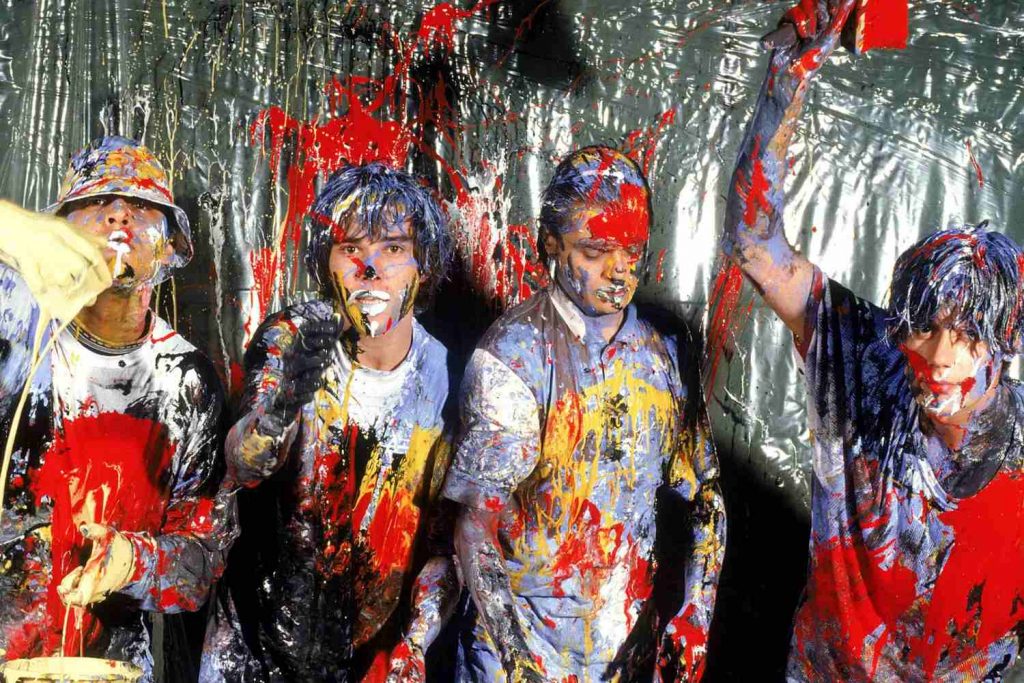Meet the soundtracking Dons behind some of your favourite on-screen moments, Finishing Move Inc.
Finishing Move Inc. are without doubt one of the most in-demand sound design/composition teams going at the moment.
The LA-based duo, made up of Brian White and Brian Trifon, have over time accumulated the kind of credit list that most can only dream of, having worked on some of the biggest titles in the gaming and film world.
Read up on all the latest interviews here.
We recently caught up with Brian and Brian, to talk Halo, Hollywood, and the hardware that got them there.
Did you guys know each other prior to entering the industry? What is it about working together that makes it such a potent pairing?
We were good friends before we started Finishing Move Inc. and had collaborated together on various projects at a commercial music house we both worked for in the late ’00s. We noticed that we had very complementary skill sets, and whenever we’d collaborate on something, it would just turn out a lot better, so we decided to team up and form Finishing Move Inc.
Working as a team really suits our workflow, as it allows us to deep dive and try out new ideas or concepts that would otherwise take too much time away from getting work finished. A lot of times, one of us might be doing R&D on some new sound or technique while the other is writing, and we can trade off as needed.
It can be hard to push the sonic envelope if you are always just trying to push stuff out the door and meet a deadline, so we both really enjoy the flexibility and support the team dynamic offers.
From your perspective, was there a particular breakthrough moment or was it more a case of chipping away for years and slowly building momentum? Did you guys have any formal training or study?
We still think we are slowly chipping away! Halo 2 Anniversary was a big break for us, as it was the first massive project Finishing Move Inc. took on as a proper company, and we had just come off a canceled project the year prior and really needed a win.
We score supervised and produced that whole soundtrack, in addition to lending our composing and sound design skills, which was a huge responsibility and really set the tone for Finishing Move as a “triple-A” team in game audio.
What does the average day normally entail at Finishing Move? Do you have a set creative process/workflow or does it differ from project to project? Are you usually working out of your own space or do you normally decamp to another studio?
The workflow differs from project to project and depends on what other projects are happening in tandem. We have a full-time assistant, and the three of us generally split up the work based on what needs to get done and when. We all have our own studio spaces, and most of the time, we are trading sessions and stems back and forth via dropbox and discussing stuff in a group chat.
We’ve never been the type of team that can sit behind each other in the studio while the other person works, the process is much better when we huddle up, handout the marching orders, and go into or respective corners to get stuff done.
Everything usually finishes at Brian White’s studio, as he has a professionally designed and built room with calibrated reference monitoring.
From the high-octane synthiness of Crackdown 3 to the lush, orchestral driven work on Halo Wars 2, Finishing Move are well-known in the gaming world their dense, narrative driven composition style. Is there a particular type of project or sonic palette that you prefer to work with?
We love to push the envelope of musical sound design and create stuff no one has ever heard before. For example, we developed our instrument Posthuman during work on Halo Wars 2 as a bridge between otherworldly synthetic sounds and the organic sounds from the live orchestra, because we didn’t feel like anything off the shelf was doing what we wanted.
Our dream project is any project that allows us to blur the notion of what makes a sound feel synthetic or organic, and how unique timbres can support or convey the emotion of the project or scene in addition to the melodic and harmonic content of a cue.
On top of all your game work, you also have a slew of sound design credits in the film world – Uncut Gems, X-Men: Dark Phoenix and Mad Max: Fury Road, just to name a few. How does designing audio for film differ to designing for the game-sphere? Does it require a different approach given the constantly shifting visual context or do the same principles still mostly apply?
A lot of our sound design work focusses heavily on theatrical trailer content, which is even more specific than just sound design for film or sound design for games. Trailers have to convey the emotional impact of a two hour film in under two minutes, so the way they use sound and music is often very different than how it gets used in the actual film, TV show, or game it represents.
The core tools and workflow of sound design remain the same; source/field recording, DAW processing techniques, etc. so it’s more about changing your mindset of where it is going to be used and how it needs to function in that context.
For example, a gunshot or weapon in a film may be intentionally very realistic or only slightly sweetened for impact. In contrast, a gunshot designed for use in a trailer is purposely built to sound 100 times larger than life, with a huge impact layered in and a super long reverb tail, because that one sound has to convey a whole film’s worth of energy and emotion in a very short window of time.
I know you guys are big fans of Native Instruments VST’s – you even released your own ‘POSTHUMAN’ signature software instrument for Kontakt. What is it about the Native Instruments stuff that works so well for sound design/soundtracking?
NI makes amazing tools for creators looking to quickly find a great sound and start writing, but they also make amazing tools for people who want to get down and dirty with sound design and go really deep.
On one side, you have something like Kontakt player, which makes it super simple to pull up a beautiful orchestral ensemble with zero fuss. On the other side, you have tools like Reaktor, where the user community is super active, making just the craziest stuff you can imagine.
The depth in their product line makes it an easy one-stop-shop for a lot of the creative tools we use.
You’ve also got a particular penchant for SSL Fusion stereo outboard processing. How did you come across this unit and what is it that makes it such an integral part of your signal chain?
I think we read about the Fusion on Gearslutz initially. It took a few months to actually get the unit we ordered because it was brand new, and supply was short. The drive portion is worth the price of admission alone, and the rest of the box is just the gravy on top. Something about that drive circuit and how it inflates the signal really compliments the rest of the hardware chain we have cooked up.
For example, when you’re doing really dynamic or cinematic stuff, it can be hard to get a lift out of the softer sections without killing the delicate envelope of your mix. A lot of times, a compressor even with half a dB of gain reduction just sounds wrong in this scenario, that’s where the Fusion’s drive circuit really shines. It has this way of lifting and adding density to the signal while retaining all the dynamics that just seems to work for our material.
Are you guys mostly mixing in the box or are you working from a console? Other than the Fusion, are there any other pieces of hardware that are vital to you workflow?
It’s a hybrid approach. Depending on the demands of the project, ITB is sometimes the only way to approach the massive asset breakouts and razor-thin deadlines for the game music schedules we work on. The benefits of total recall and offline bouncing become essential in those scenarios. When we do stereo mixes, say for soundtrack releases and when schedule permits, we like to mix into a hardware 2-bus chain. It’s actually a pretty straight forward chain of mostly harmonics and saturation.
The mix comes out a Metric Halo ULN-8 into a Louder than LIftoff Silver Bullet (always in cascaded A-N or N-A mode), then into the SSL Fusion (which has an SSL style VCA compressor patched into the insert), then into a Manley NuMu compressor (with maybe .25-.5 dB of gain reduction happening at the loudest sections, really it’s just for some hi-fi polish) and back into the box via a Dangerous Convert A/D (which has an additional transformer circuit that we can kick in on certain material).
There is no patch bay, it’s all hard-wired in the same order for every mix, and everything generally stays set up in just one or two configurations to make recall easier. That way, we can gain stage into the chain from the DAW, and it just works its magic with very little fuss.
With so much work on, do you still find time to experiment with new techniques when working or is your process fairly set at this point? Have you experimented with anything new on any recent that you wouldn’t have thought would work in the past?
Yes! Experimentation is a huge part of our process. As we mentioned earlier, being a team allows us to build in time for that during any project. We even make a point to use any downtime to explore new creative techniques that we think up, even if it’s just checking out what new sample libraries or plug-ins came out recently. Most of our best production techniques are born out of experimentation with little expectation of how it might turn out.
Plenty of these experiments end in failure, where you think you have an idea about how to approach something, and it just doesn’t work well in practice. But sometimes you surprise yourself with how well something works, and it’s usually things that are quite simple that yield the coolest results.
Something that has always impressed me with your work is your virtuoso use of pan automation and mid-side processing to create a sense of drama and narrative within a piece. When mixing for a visual medium, is that something you are paying close attention to?
Our creative use of the stereo field came long before we were working in the visual medium, so I think that aspect of our work comes naturally to us at this point, rather than being something we are overly conscious of or discussing as we work. A lot of our production ethos comes from a background in making artist music, just making records to make cool records, not for any game or film. You can hear heavy use of the stereo field back on Trifonic’s 2008 album, Emergence, which Trifon originally started working on over 15 years ago.
We try to bring those artist sensibilities and apply them to whatever score we are working on, whether it’s how we pan certain things or the distinct timbres we choose. These production aspects are just as important as the melodic notes and harmonies we come up with. We want to infuse each project with its own unique artistic identity and vibe, much like the distinct vibes of your favorite records.
Lastly, what’s next for Finishing Move Inc.? Any exciting new projects you can tell us about?
Lots of stuff we can’t really share at the moment, unfortunately. The game gods tend to only let us talk about things after they ship or very close to the launch date. But we promise, we have some very cool stuff coming out in the first half of 2020 and you can follow our socials to stay up to date on what we are working on.
This article was originally published March 2, 2020.
Find out more about Finishing Move Inc. via their socials here.
